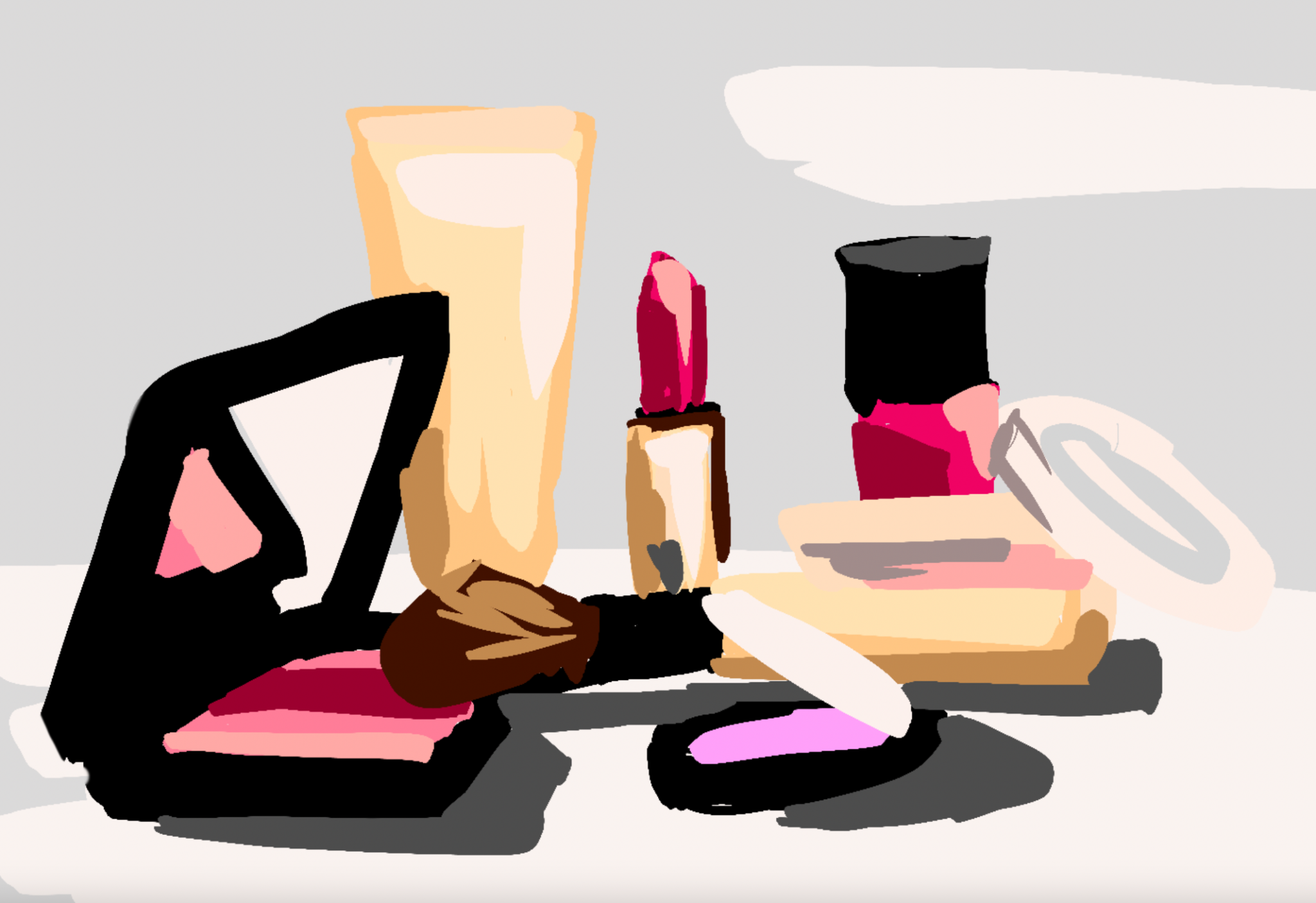
Illustration by Lizzie Conklin
The first spot I remember noticing Moles on face was the one near my right nostril. Before that, I had never thought much about the little brown spots decorating my face — clusters beneath my right and left eyes that resembled freckles, a large one hidden within my left eyebrow, a dark one eclipsing a prominent vein on my left cheek. I had other ones, too, dotting the rest of my body. Two little ones on my left hand, a couple on each shoulder and arm.
I liked that they were called beauty marks. The name made it sound like they had been lovingly drawn, carefully circled onto my skin. In my mind, I documented each new beauty mark that would materialize, noting down its size, its location and its color. But there was something about the one on my nose that bothered me. Even though it was rather small in comparison, it was the first beauty mark that didn’t make me feel beautiful. And as its color changed and deepened into a murky brown, I grew increasingly worried that my mom was right about them.
***
My mom always referred to the spots as “hēi dòu” — Chinese for “black beans.” Back when I was in middle school, she went to a Chinese dermatologist in New York and had all of hers removed. My mom’s beauty marks were larger in size and more frequent, though much lighter than mine. They were mostly concentrated on her face, a repeating pattern of pale, brown spots. When she came back home from the operation, her entire face was scabbed. All the spots had been erased and transformed into purple-red bruises. I remember her telling me, “You’ll do this when you’re a bit older.” I laughed it off, believing that she didn’t mean it seriously.
Yet, my mom’s comments became more frequent, especially as the pesky spot on my nose became more visible. She thought the “hēi dòu” marred my face and ruined my pale, light skin. In Chinese culture, “bái” — “white — skin is considered to be beautiful, and my mom tried her best to make sure that my skin stayed pure. Much to her chagrin, I had always been more susceptible to sunlight. My skin refused to tan during the summer, and if I didn’t apply sunscreen every thirty minutes, I would turn bright red. My sunburn would last for days, causing me to itch and scratch at my shoulders.
As more spots collected on me, my mom and I went back and forth, tiptoeing around the question of when I would go to the dermatologist. If I went to the beach, she would look at me with disapproval; if I didn’t wear a hat when it was really sunny, she would nag at me. When she brought up going to New York, I would laugh it off, tell her I wasn’t ready, or tell myself that there wouldn’t be enough time for me to recover. But the more she talked about removing my spots, the more I felt uncomfortable with the spot on my nose. I quietly wondered if it would be so terrible to erase them from my face — to do away with my beauty marks once and for all.
During winter break of sophomore year, my mom decided that it was time. She brought me to New York and had me sit for a consultation session with the dermatologist. “Lots of girls your age do it,” she told me in Mandarin. “You’re so beautiful, but after we erase them, you’ll be more beautiful.”
I tried to argue with my mom, but matter what, I knew I was going to have to go through with the removal. I was silent as the nurse applied alcohol to my face, rubbing each of my spots. When she left, I couldn’t help but tear up. While my mom and the doctor excitedly examined my face, I was left with the realization that I would never see my beauty marks in the mirror again. I would never be able to tap the one on my left cheek or point out the one in my eyebrow to my friends or even look at the one on my nose. Despite what my mom and the dermatologist said, the thought of losing my beauty marks made me feel less beautiful. If I had been bestowed with them, why was I giving them away?
It took a few weeks for the scabs to peel and fall off. The process was painful — I could feel the blisters scattered on my face, blood clots heavy with sadness. I was repulsed every evening when I watched myself brushing my teeth — each punctured beauty mark was now an ugly purple-red clump. When I looked into the mirror for the first time after my face was healed, I was surprised to see myself. Is this what my mom wanted? Is this what all the young girls in the dermatology office wanted? Is this what it meant to be beautiful?
For my skin to be clear, but for me to feel empty?
It is bittersweet to look back at old pictures of myself. I do still have some beauty marks from before — I was able to keep the mark on my left eyebrow and some of the darker ones weren’t completely erased, but the one on my nose is no longer there. I sometimes feel like I lost a childhood friend — I moved away, grew up, got older. Now, I know that there was no reason to be afraid of its existence. Even with it, I was beautiful.







